What really caused the floods?

The month of August saw simultaneous heavy rain in Northeast India, Tripura, Assam and Meghalaya. Subsequently, water overflowed as the gates of hydropower plants, barrages and dams were opened. The upstream flow crossed the danger level at 14 points in seven transboundary rivers of Bangladesh. Many flood-control dams, including the one on Gomati, have collapsed. Feni, Cumilla, Noakhali, Khagrachhari, Habiganj, Chandpur, Cox's Bazar, Munshiganj, Sylhet, Lakshmipur, Chattogram, and Brahmanbaria have flooded. Twenty people have died, while more than five million have been affected.
This whole event has started a debate on whether the August floods are natural or politically-caused. Such a question is incorrect because all disasters have both natural and political aspects.
The main cause of the August flood is excessive rainfall in a short period. We witnessed similar floods recently in Sylhet, Sunamganj, Bandarban and even in Dubai. Climatologists maintain floods due to excess rain and meteorological droughts are impacts of climate change. Scientists have also proven that global warming is exacerbating the climate crisis and rich countries with their fossil fuel-dependent neoliberal, consumerist economies and systems are mainly responsible.
The connection between the August floods and the climate crisis is, in no way, apolitical. Floods are political irrespective of India's action of opening gates of power plants, dams, and barrages because the global politics centring the climate is a given. Besides, the unresolved river management undertakings between India and Bangladesh are also part of politics.
Also, the recent floods have given us a message, that whether it rains or not, the avenues for water to flow naturally have, over the years, decreased. As rivers and wetlands have been filled up, many canals disappeared, and floodwater, finding no space to flow, spreads all around, inundating the land.
A crisis of prediction and preparedness?
For a long time, we have been raising questions about disaster forecasting and preparedness. Lack of will, proactivity and accountability in providing forecasts and warnings have come to the fore many times. The practice of citizen forecasting—along with preparing for disasters by analysing cloud patterns, wind speed, temperature variations, constellations or various activities of flora and fauna—is now rare. The state never recognised this knowledge of the lower classes.
Only the Meteorological Department's forecasts are primarily considered now. Moreover, its information does not translate equally across the country, classes and professions. For example, "danger signal-10" does not mean the same thing in coasts, haors, hills and Barind regions. Besides, we see no early warnings or effective forecasts when haors are severely submerged by hilly run-offs or when Barind regions are scorched by severe droughts. Interestingly, the Met Office is under the defence ministry, as the state considers forecasting and warnings to be a "defence" aspect.

Since Cyclone Sidr in 2007, forecasts relating to cyclones have been regularly broadcast. After Cyclone Aila in 2009, forecasts and disaster preparedness became more structured. Previously, disaster broadcasts were disseminated through radio, television, magazines, and loudspeakers or flag-pulling at the local level. During cyclones Bulbul, Fani, Amphan, Jawad, Roanu, Yaas, Sitrang and Midhili, online platforms and social media have also played an important role in cyclone warnings. Besides the Met Office, many independent meteorologists and organisations are providing forecast information too.
However, the tradition of disaster preparedness varies across the country. A culture of forecasting and disaster preparedness has developed relatively well in the coasts—not in all the 19 coastal districts, but predominantly in the Satkhira-Khulna region. In the Northeast's haors, especially in Sunamganj, Kishoreganj and Netrakona, people only prepare for disasters to harvest paddy in Boro season. In the north, the people of Kurigram, Lalmonirhat, Nilphamari or Gaibandha have many advance flood-preparation practices. Haors face disaster risks in March-April, coastal areas in May-June and November, and other parts of the country in monsoon. But floods in August are a new phenomenon, at least according to the elders of Feni, Noakhali, Khagrachhari and Cumilla.
So, was there no prediction or advance warning for the current flood? There was, both before and after the July uprising. At the beginning of August, the Meteorological Department forecasted short-term floods in north, north-central and southeast regions. It pointed to heavy monsoon rains as the cause. According to the Flood Forecasting and Warning Centre of Water Development Board, the waters of seven transboundary rivers were flowing above the danger level. Even the outgoing head of state, at the beginning of July, relayed the possibility of floods. The South Asian Climate Outlook Forum predicted them way back in April.
Even after so many predictions, why weren't our preparations strong enough? The present government had virtually no time to prepare in advance, as many things happened at incredible speed after the uprising. At the same time, India delayed in giving comprehensive advance warning of excessive rainfall and floods. This is a breach of previous commitments and agreements.
Transboundary river dictatorship
In 2005, when we identified the haor problem as a transboundary crisis, there wasn't a large enough movement on this issue. People in general opposed the Farakka barrage, there were expectations regarding sharing Teesta's water, and some were against the Tipaimukh dam.
I tried to understand the transboundary crisis by visiting the common river-basin towns of Bangladesh and Northeast India. Additionally, I have regularly written about the crises in downstream Bangladesh due to the construction of large dams upstream, hydropower projects, roads, bridges, deforestation, and multinational mining. In 20 long years, I haven't found anyone who started "anti-India" protests by bringing up floods, till now.
The National River Conservation Commission listed 1,008 rivers in the book Bangladesh Nod-Nodir Shonga o Shonkha, published in 2023. The Water Development Board has divided the country's rivers into 17 hydrological regions and identified 57 rivers as common transboundary rivers. Of these, 54 rivers originate in India and three in Myanmar. However, many more transboundary rivers like Mahadeo or Ranganadi are still out of the list. In almost every river, India has built dams, hydroelectric projects or structures, or blocked the flow of inter-state rivers through some development project or encroachment and pollution. This transboundary dictatorship is endangering not only downstream Bangladesh but also upstream people's lives and wildlife.
This dictatorship is contrary to international agreements and commitments on transboundary river management. The Bangladesh-India Joint River Commission, formed in 1972, has not yet taken all the necessary decisions surrounding the inter-state rivers. As per the 1996 Ganga Water Sharing Treaty, both India and Bangladesh are responsible for equitable and transparent management of the river. According to the United Nations Convention on Biological Diversity (1992), states cannot carry out activities that endanger the biodiversity of neighbouring countries. In the 38th meeting of the Joint River Commission held in 2022, it was decided that India would inform Bangladesh about floods at the right time. As we have seen, people did not have ample opportunity to take preparation for saving lives and property because the authorities concerned failed to inform them on time.

Flood trauma and water justice
A state's one-sided, authoritarian stance on inter-state rivers inflicts severe flood-trauma on the people of other states. At the same time, water retention and control from upstream create public discontent in downstream townships. And the narrative to fight for river-democracy and water justice gains momentum.
In 2019, the High Court ruled that rivers are living entities. But both the state of Bangladesh and India's neoliberal system do not treat rivers as living entities. Both states chop up rivers, control them by force, and engage in plundering. Although Bangladeshis marched against Farakka barrage, the state of Bangladesh supported the Kaptai dam, which displaced one lakh people from their native land, submerging homesteads and farmland. Forget the upstream, the downstream is also being butchered, as Bangladesh has also imprisoned rivers through barrages, dams, encroachment, and pollution.
While there is debate over the release of excess water stored in reservoirs, such incidents are taking place on a smaller scale right inside the country. The rubber dams built on Sukh river in Thakurgaon or Khasiamara in Sunamganj disadvantages the villagers living both upstream and downstream by trapping water in dry season or releasing it in monsoon.
There are many more examples of such injustice. In 1985, Bangladesh built a dam on Feni river. In 2021, the Maitri Bridge built by India on Feni was inaugurated. Meanwhile, India also constructed the Dumboor dam on Gomati river, which is dangerous, evident by its collapse during the recent floods. All this while, in the name of sand trade, Gomati has been mutilated in Bangladesh.
All these events profess our destructive development philosophy centring rivers. Neither state has yet stood for the free flow of waterbodies. So, it is important to present this philosophy to demand water justice in joint river management. Citizens should urge that all dams and structures be removed from upstream and downstream of transboundary rivers. Water's essence is to flow from top to bottom, from upstream to downstream, without any hindrance from the powers that be.
Pavel Partha, an ecology and biodiversity conservation researcher, is director at Bangladesh Resource Centre for Indigenous Knowledge (BARCIK). He can be reached at [email protected].
A longer version of this article can be found in Bangla, here.
Views expressed in this article are the author's own.
Follow The Daily Star Opinion on Facebook for the latest opinions, commentaries and analyses by experts and professionals. To contribute your article or letter to The Daily Star Opinion, see our guidelines for submission.

 For all latest news, follow The Daily Star's Google News channel.
For all latest news, follow The Daily Star's Google News channel. 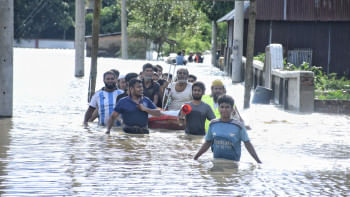



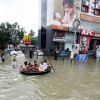
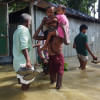

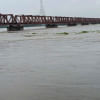
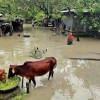


Comments